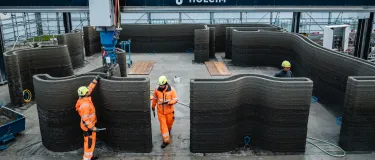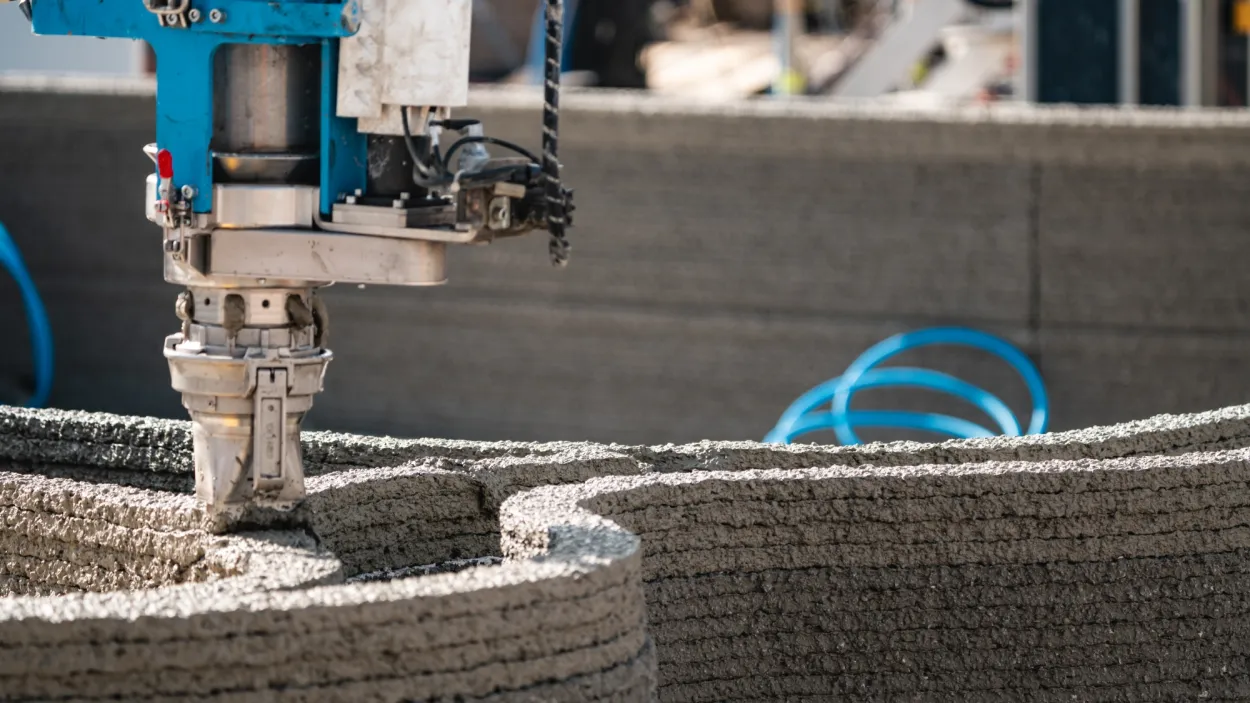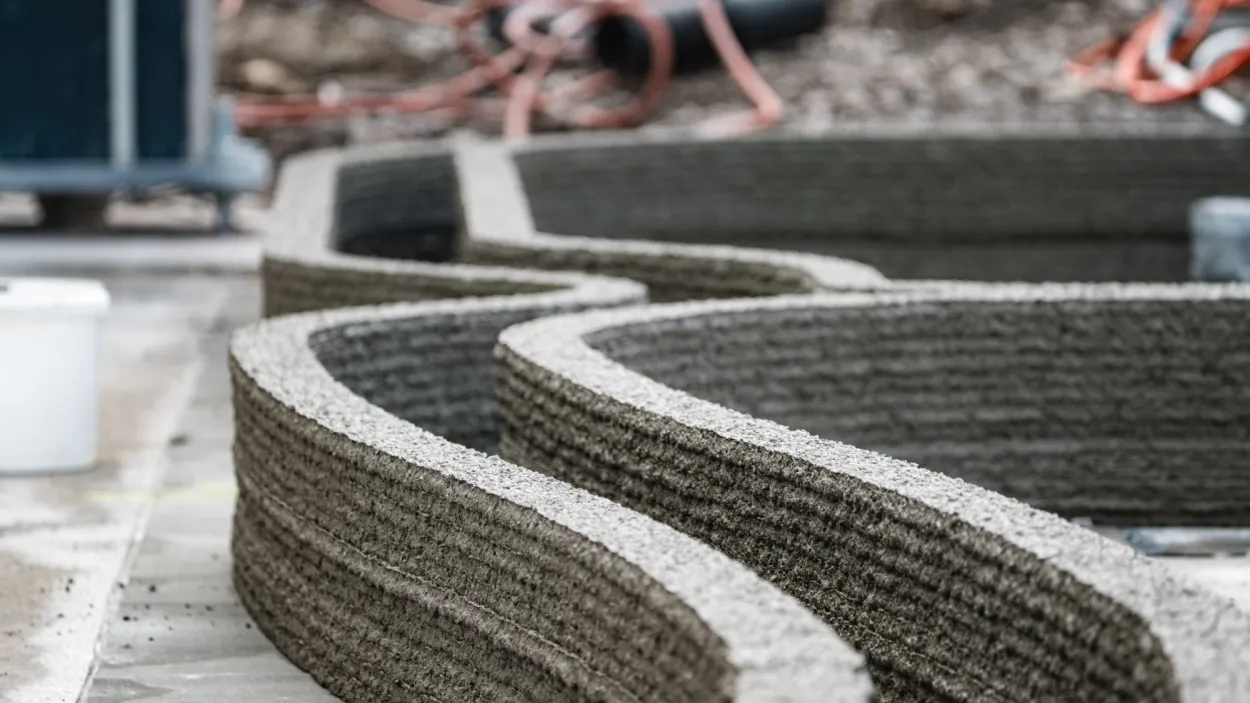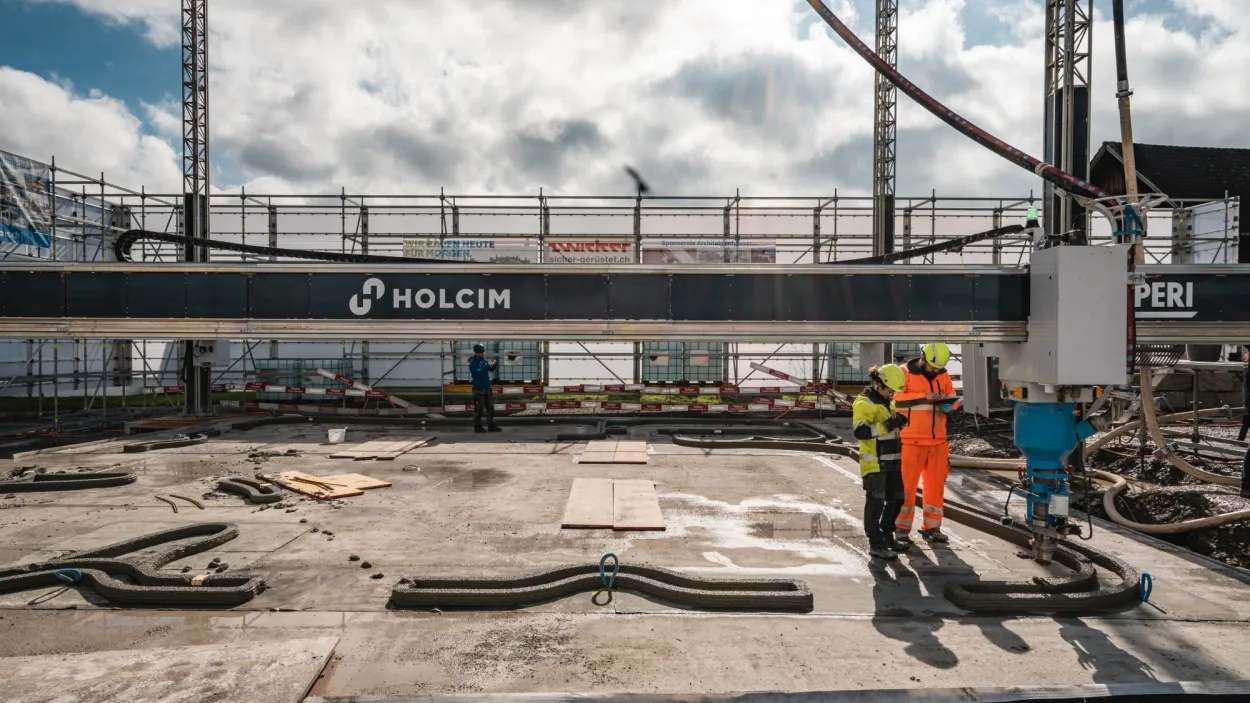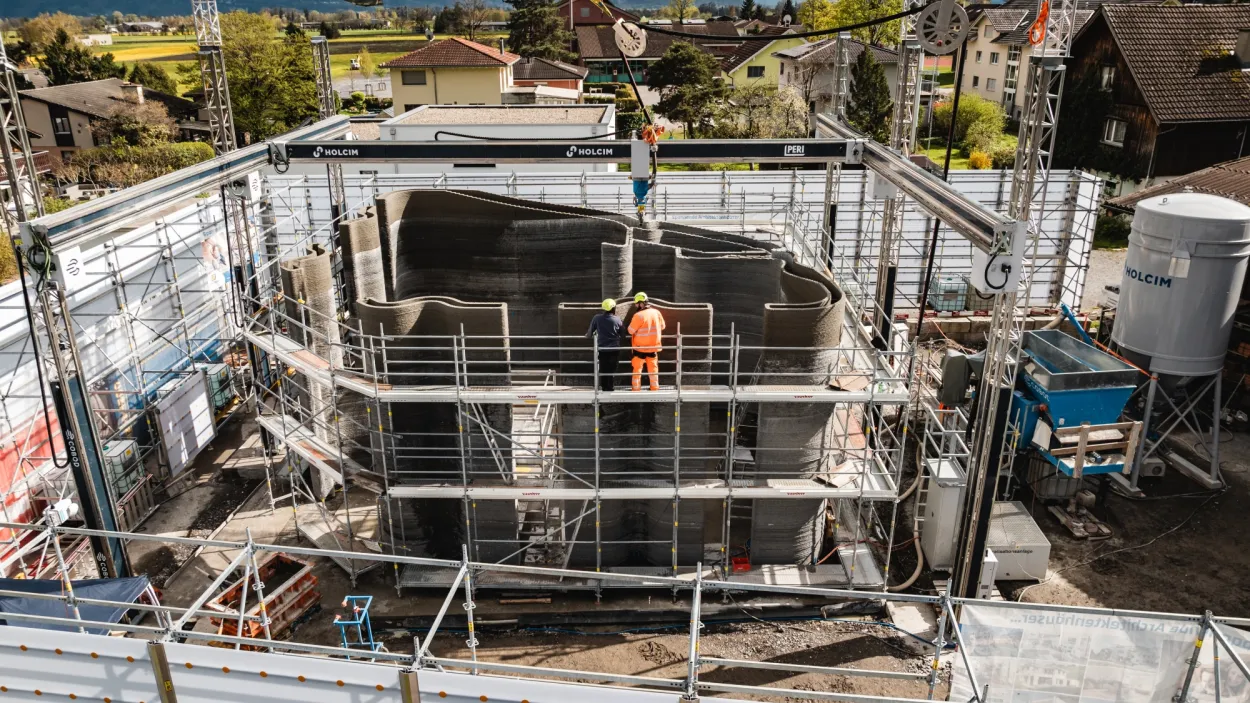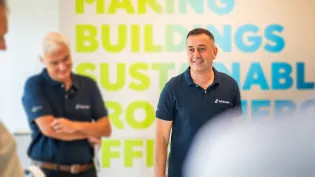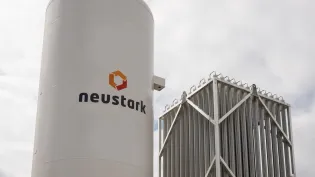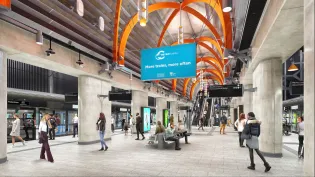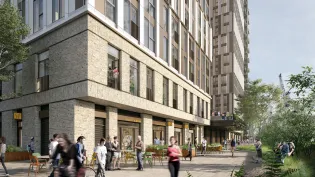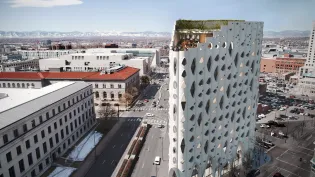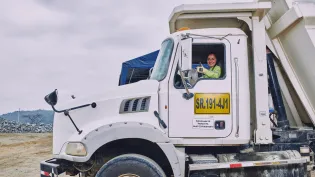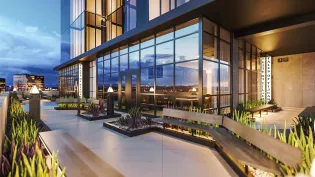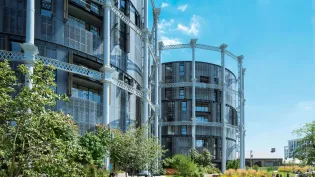Bringing Switzerland’s first onsite 3D concrete-printed building to life
What do you do when you run out of office space? Build Switzerland’s first onsite 3D concrete-printed building in eight days – to unlock freedom of design and form, with the potential to achieve time, cost and material savings, as well as sustainability benefits.
3D concrete printing is still a novelty in Switzerland, but Holcim is showing what’s possible and setting new standards with our innovative technologies. This showroom pavilion for construction company Kobelt AG, a rapidly growing construction company, is just the start.
First onsite concrete-printed building in Switzerland
Increased strength and less cement for better environmental performance
Freedom of form to bring building’s complex design to life
Beauty meets efficiency and sustainability
“Instead of expanding the office, the board of directors of Kobelt AG decided to build a new space for the showroom on the current office grounds” Kevin Böhlen, Project Manager at Holcim Switzerland, explains.
The vision for the company’s new showroom needed to reflect Kobelt’s expertise in architecture, planning and construction. Clear facets and fan-shaped steel supports are complemented by a wing-shaped roof made of multi-layered wooden panels.
“Thanks to their pioneering spirit and interest in innovative construction technologies, Kobelt decided to explore the possibilities offered by 3D concrete printing when it comes to freedom of form to build the pavilion – something that had never been done onsite in Switzerland before,” Kevin adds.
Our 3D concrete printing technology is a process that involves a special concrete being applied in layers without the need for formwork. To make the process time- and resource-efficient, this happens according to a previously created digital 3D model.
For this showroom, we used a COBOD printer to print a special concrete as an innovative alternative to the mortar often used in 3D printing. This type of concrete is characterized by increased strength and contains less cement than mortar, which has a positive environmental impact. Another advantage is that the main components of concrete – sand and gravel – are locally available.
What are the sustainability benefits of 3D concrete printing?
Empowering smart design, 3D printing can reduce material use by up to 50% to build better with less, with no compromise in performance.
3D-printed walls can also reduce a building’s or structure’s carbon footprint. For example, to build the Phoenix Bridge, we developed a proprietary concrete ink with an optimized low-carbon formulation that brought the structure’s overall carbon footprint down by 25%.
3D printing is also helping drive circular construction to save our planet’s resources. Circular by design, Phoenix stands solely through compression without reinforcement, with blocks that can be easily disassembled and recycled.
Redefining what’s possible
“We printed the showroom in eight printing days with a total of 60 m3 of concrete. There were several challenges, but these learnings will help us improve our workflow for future projects. A special thanks to everyone who helped us and supported us. Also, a big thanks to Kobelt AG for their trust in us to print the first onsite building in Switzerland.” Kevin says.
The pavilion covers an area of around 150 m² and reaches a total height of 6.2 meters. The total length of the printed material is 27 kilometers.
With the vision of making the construction industry more sustainable, efficient and safe, Holcim constantly explores innovative technologies along the entire value chain – from the quarry to the construction site and the recycling of building materials.





